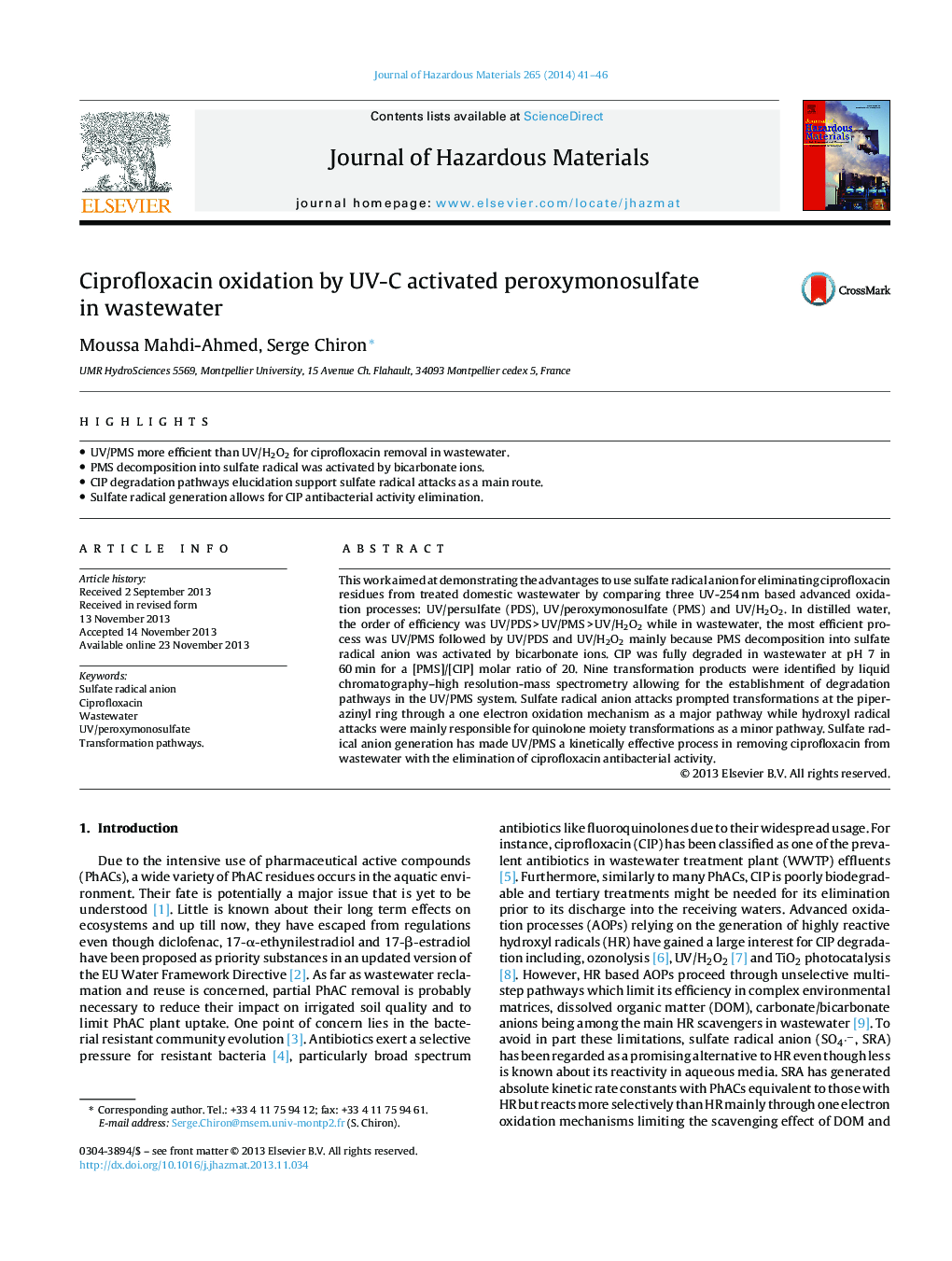| Article ID | Journal | Published Year | Pages | File Type |
|---|---|---|---|---|
| 576933 | Journal of Hazardous Materials | 2014 | 6 Pages |
Abstract
This work aimed at demonstrating the advantages to use sulfate radical anion for eliminating ciprofloxacin residues from treated domestic wastewater by comparing three UV-254Â nm based advanced oxidation processes: UV/persulfate (PDS), UV/peroxymonosulfate (PMS) and UV/H2O2. In distilled water, the order of efficiency was UV/PDSÂ >Â UV/PMSÂ >Â UV/H2O2 while in wastewater, the most efficient process was UV/PMS followed by UV/PDS and UV/H2O2 mainly because PMS decomposition into sulfate radical anion was activated by bicarbonate ions. CIP was fully degraded in wastewater at pH 7 in 60Â min for a [PMS]/[CIP] molar ratio of 20. Nine transformation products were identified by liquid chromatography-high resolution-mass spectrometry allowing for the establishment of degradation pathways in the UV/PMS system. Sulfate radical anion attacks prompted transformations at the piperazinyl ring through a one electron oxidation mechanism as a major pathway while hydroxyl radical attacks were mainly responsible for quinolone moiety transformations as a minor pathway. Sulfate radical anion generation has made UV/PMS a kinetically effective process in removing ciprofloxacin from wastewater with the elimination of ciprofloxacin antibacterial activity.
Related Topics
Physical Sciences and Engineering
Chemical Engineering
Chemical Health and Safety
Authors
Moussa Mahdi-Ahmed, Serge Chiron,
